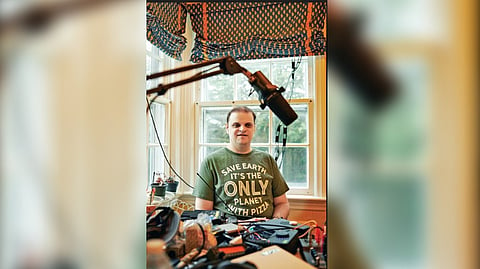

CHENNAI: Patrick Perdue, a radio enthusiast (pictured) who is blind, regularly shopped for equipment through the website of Ham Radio Outlet. The website’s code allowed him to easily move through the sections of each page with his keyboard, his screen reader speaking the text. That all changed when the store started using an automated accessibility tool, often called an accessibility overlay, that is created and sold by the company accessiBe.
Suddenly, the site became too difficult for Perdue to navigate. The accessiBe overlay introduced code that was supposed to fix any original coding errors and add more accessible features. But it reformatted the page, and some widgets — such as the checkout and shopping cart buttons — were hidden from Perdue’s screen reader. Labels for images and buttons were coded incorrectly. He could no longer find the site’s search box or the headers he needed to navigate each section of the page, he said.
Perdue is one of hundreds of people with disabilities who have complained about issues with automated accessibility web services, whose popularity has risen sharply in recent years because of advances in A.I. and new legal pressures on companies to make their websites accessible.
Over a dozen companies provide these tools. Two of the largest, AudioEye and UserWay, are publicly traded and reported revenues in the millions in recent financial statements. Some charge monthly fees ranging from about $50 to about $1,000, according to their websites, while others charge annual fees in the $700 or $1,000 range. (Pricing is typically presented in tiers and depends on how many pages a site has.) These companies list major corporations like Hulu, eBay and Uniqlo, as well as hospitals and local governments, among their clients.
Built into their pitch is often a reassurance that their services will not only help people who are blind or low vision use the internet more easily but also keep companies from facing the litigation that can arise if they don’t make their sites accessible. But it’s not working out that way. Users like Perdue say the software offers little help, and some of the clients that use AudioEye, accessiBe and UserWay are facing legal action anyway. Last year, more than 400 companies with an accessibility widget or overlay on their website were sued over accessibility, according to data collected by a digital accessibility provider.
“I’ve not yet found a single one that makes my life better,” said Perdue, 38, who lives in Queens. He added, “I spend more time working around these overlays than I actually do navigating the website.” Last year, over 700 accessibility advocates and web developers signed an open letter calling on organisations to stop using these tools, writing that the practical value of the new features was “largely overstated” and that the “overlays themselves may have accessibility problems.” The letter also noted that, like Perdue, many blind users already had screen readers or other software to help them while online.
AudioEye, UserWay and accessiBe said they shared the goal of making websites more accessible, acknowledging to some extent that their products aren’t perfect. Lionel Wolberger, the chief operating officer of UserWay, said the company had apologised for the issues with its tools and had worked to fix them, pledging to do the same for anyone else who points out problems. Josh Basile, a spokesman for accessiBe, criticised the open letter against overlays, saying it was “pushing the conversation in the wrong direction.” He added, though, that the company was willing to learn from feedback.
Visit news.dtnext.in to explore our interactive epaper!
Download the DT Next app for more exciting features!
Click here for iOS
Click here for Android